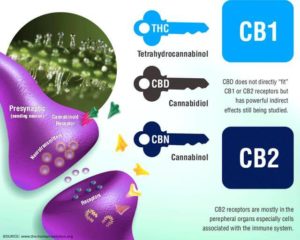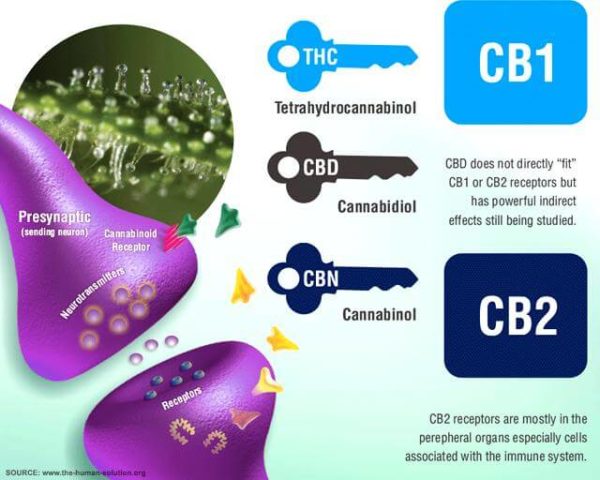Understanding The Endocannabinoid System
What is the Endocannabinoid System? First, let’s take a brief look at our history with marijuana. Medicinal marijuana was originally used as an anesthetic in China during the 1st century. It was also used to treat tremors, muscle-pains, and was even prescribed during child birth. Marijuana’s influence on history spread all over the world; from China to Egypt and eventually to North America. Cannabis was the world’s most highly revered crop due to its reported medical benefits–as well as its agricultural properties. In 1850, cannabis extract was even listed in The U.S Pharmacopeia for having medical benefits. But by 1931, 29 states had suddenly outlawed marijuana and the rest of the world followed suit. This oppressive act halted thousands of year’s worth of research.
“In 1850, cannabis extract was even listed in The U.S Pharmacopeia for having medical benefits”
Nearly a century later, medical marijuana is now legal in half of the United States. It is prescribed in treating inflammation, PTSD, nausea, and much more. In 2012, Colorado and Washington made history by becoming the first states to completely legalize marijuana for recreational purposes. This Paradigm Shift has allowed for more substantial research to be conducted in exactly how the cannabis plant can positively affect the body.
How Does the Endocannabinoid System Work?
Medical marijuana works in treating a variety of ailments, thanks to the endocannabinoid system, (ECS) which is produced naturally within the body by humans and animals. It is made up of cannabinoid receptors, which plays a very important role in regulating physiological functions. Interestingly enough, certain cannabinoids can also be found in birds, fish and reptiles.
“Medical marijuana works in treating a variety of ailments, thanks to the endocannabinoid system”
The two primary endocannabinoids that exist within the human body are the CB1 and CB2 receptors. These receptors are targeted by two endocannabinoid binding molecules, anadamide and 2-AG. When marijuana is consumed the phytocannabinoids, THC and CBD, act on these cannabinoid receptors in our body, which modulates several of the bodies physiological and psychological functions. In 2004, researchers from the University of California found that, with the help of endocannabinoids and phytocannabinoids, increasing anandamide levels in the brain can in fact counter-balance the effects of depression, anxiety, and psychosis.
“endocannabinoids and phytocannabinoids, increas[e] anandamide levels in the brain…counter-[acting] the effects of depression, anxiety, and psychosis”
Several studies have recently been conducted in the research on CB1 and CB2 receptors. CB1 receptors are located in parts of the brain that are associated with memory, behavioral-addictions, anxiety, OCD, Tourettes, and Alzheimers. This suggests that by manipulating these receptors a variety of conditions can treated. Researchers were recently able to discover a direct connection between CB1 receptors and food-seeking behavior. Another study, performed in 2010, discovered that these receptors may also play a role in the treatment of stress disorders, which can ultimately affect the cardiovascular system.
CB2 receptors, which are primarily located in the peripheral nervous system, have been researched in the treatment of pain and inflammation. With certain studies suggesting that these receptors may play an important role in the treatment of ASD; due to high levels of the pro-inflammatory proteins associated with autism.

How Does CBD affect the Endocannabinoid System?
When first consuming CBD-rich cannabis compounds or, cannabinoids in general, the body may feel overwhelmed at first. Most humans have not supplemented their diet with cannabis for years. Cannabinoids work by supplementing a system that has been deficient and by activating receptor sites in the ECS.
See Also: Does CBD Get you High?
Dr. Ethan Russo is the Senior Medical Advisor at GW Pharmaceuticals, the company responsible for the cannabinoid medicines, Epidiolex and Sativex, which are used in treating multiple sclerosis and epilepsy in newborns. He believes that “deficient cannabinoid levels may be the underlying cause of numerous conditions alleviated by cannabis.”
“deficient cannabinoid levels may be the underlying cause of numerous conditions alleviated by cannabis.”
How Can I Strengthen My Endocannabinoid System?
Humans have been using cannabis for thousands of years. Cannabis seeds, which contain all of the essential amino acids and fatty acids necessary to maintain human life, were commonly ingested by our ancestors. Essential fatty acids like omega-3 have received lots of attention from the general public. Dr. Melamede suggests that essential fatty acids from hemp oil would be far more beneficial than Omega-3; while also stating that people don’t die from old age, people die from age-related illnesses.
The endoncannibinoid system plays such a vital role in maintaining homeostasis; however cannabinoids have biphasic properties, meaning more research is needed in order to treat the wide-variety of illnesses that can be targeted. Small doses and large doses of the same cannabinoids can have opposite effects on the ECS. Regardless, companies like GW Pharmaceuticals, have already made history with the advancements in marijuana and the endocannabinoid system.


